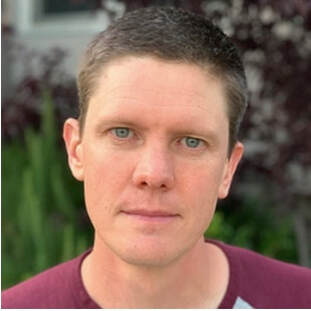That tension has been felt locally through the City of Mill Valley’s broad range of efforts to make a dent in the lack of affordable housing supply in Mill Valley.
At a virtual event via the Outdoor Art Club on April 15, Dougherty, primarily an economics reporter, spoke about the housing crisis, noting both the complexities and the wide range within the debate. “If there are two or three sides to a dispute over a park, there are 40 over housing,” he said. “To some extent, this is the problem of modern civilization. How are we going to set up how and where we live, and how are we going to accommodate children and growth. Where we choose to live pretty much defines us.”
Dougherty excels in putting the housing crisis into broader context in terms of its impact on towns and cities. As he writes in a 2020 piece centering on Steve Falk, the former city manager of Lafayette in the East Bay, “Nearly all of the biggest challenges in America are, at some level, a housing problem. Rising home costs are a major driver of segregation, inequality, and racial and generational wealth gaps. You can’t talk about education or the shrinking middle class without talking about how much it costs to live near good schools and high-paying jobs. Transportation accounts for about a third of the nation’s carbon dioxide emissions, so there’s no serious plan for climate change that doesn’t begin with a conversation about how to alter the urban landscape so that people can live closer to work. Nowhere is this more evident than California. It’s true that the state is addressing facets of the mess, with efforts on rent control, subsidized housing and homelessness. But the hardest remedy to implement, it turns out, is the most obvious: Build more housing.”
In his resignation letter following community uproar over his support to build housing in Lafayette, Falk wrote, “All cities — even small ones — have a responsibility to address the most significant challenges of our time: climate change, income inequality, and housing affordability.”
City of Mill Valley officials have faced similar hurdles. Officials conducted a citywide review in 2020 of 71 city-owned parcels and the various ways they could be used, either as a possible site for affordable housing, like the current Public Safety Building on Hamilton Drive, or land that could be sold to generate revenue to support affordable housing or donated as part of a larger affordable housing development to potentially create an affordable housing development in town for the first time since 1986.
The public hearing was largely dominated by a neighborhood’s defense of a pair of City-owned vacant lots near Scott Highlands Park, despite the fact that there was no proposal to sell parks, or even park-adjacent land. Most of the community input on the issue of the identified sites focused on the possible sale of the park itself. City officials backed off the park-adjacent lots as a possible location of, or as a funding source for, affordable housing but pledged their continued commitment to create affordable housing in Mill Valley.
At his virtual OAC talk, Dougherty said that many Bay Area communities see the “blizzard of bills introduced in Sacramento related to housing” “as a threat to their suburban town or neighborhoods and the costs that come with dense development.” Asked what a middle ground might look like in the housing debate, Dougherty said the variability from community to community was massive.
Of SB50, State Sen. Scott Wiener SB 50’s failed proposal in 2020 to increase “building heights statewide to five stories near major transit stops or in job-rich areas, and allow multifamily apartments on most properties,” some would describe that as a middle ground and some would describe that as a bulldozer bill,” Dougherty said. “We live in a giant, interconnected region that has a lot of resources – bridges, water treatment plants, massive recreation areas bought by state and fed government. All of those are resources would not exist without a larger region securing it. That means we have to solve some of out problems on that same scale.”
The housing debate has become intertwined with a massively expanded definition of environmentalism, he said. “When we started treating every lawn in font of our house the same as a redwood forest, it leads to conditions of sprawl. If you want to live in a truly rural place you can do that with very little cost. When you have a massive commuter rail in in one of the most urbanized places in the world? It’s a bit unfair to describe where you live as rural or semi-rural. When you have a region that is economically viewed as one region but you have 120 cities (within it) that think that their one piece of it should have complete autonomy except for those large things like freeways and water treatment plants, that starts to feel a little unfair.”
Here’s the recorded video from the OAC’s “Housing in America” event:


Trackbacks/Pingbacks